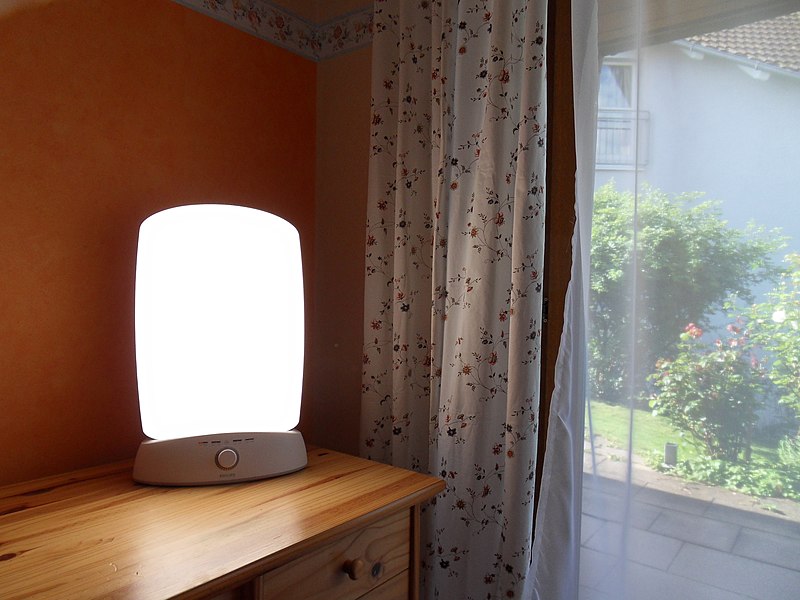 It’s the end of October—a dark time, and not only because of Halloween ghouls. Today in New York City, we won’t see the sun until 7:19am, and we’ll have to say good-bye at 6:00pm. Each passing day will be distressingly shorter than the day before, until December 21, when the sun will set at 4:31pm, the pattern will reverse, and each passing day will give us a bit more time under the sun.
It’s the end of October—a dark time, and not only because of Halloween ghouls. Today in New York City, we won’t see the sun until 7:19am, and we’ll have to say good-bye at 6:00pm. Each passing day will be distressingly shorter than the day before, until December 21, when the sun will set at 4:31pm, the pattern will reverse, and each passing day will give us a bit more time under the sun.
For the millions of people with seasonal affective disorder, a.k.a. SAD, spring couldn’t come soon enough. The depletion of light triggers bouts of depression—characterized by lethargy, lack of interest in regular activities, hopelessness and even suicidal thoughts—as well as oversleeping, carb-craving and weight gain.
 For SAD patients in the fall and winter, relief comes under a lamp, or rather, next to a light box. The box sits next to them, preferably on a desk, beaming at their eyes for up to an hour a day. The therapy greatly improves mood in upwards of 80 percent of people with SAD. But why?
For SAD patients in the fall and winter, relief comes under a lamp, or rather, next to a light box. The box sits next to them, preferably on a desk, beaming at their eyes for up to an hour a day. The therapy greatly improves mood in upwards of 80 percent of people with SAD. But why?
Most scientists have chalked it up to circadian rhythms—the cycles of certain genes turning on and off in response to light. The idea is that these clocks control the production of hormones, such as melatonin, which in turn act on mood-related regions of the brain. But a study coming out this week in PNAS suggests that ambient light can act directly on the emotional hotspots of the brain, eliminating the need for any hormonal messengers.
The researchers put healthy people into a brain scanner and played them recordings of a voice saying made up words in either an angry or a neutral tone. As the babblings blared, participants were bathed in 40-second intervals of either blue or green light. Their task was to decide whether the voice was male or female—but that was only to focus their attention on something other than the light or the emotional tone of the voice.
The team found that blue, but not green light increased responses to angry voices in part of the auditory cortex. What’s more, blue, but not green light caused certain brain regions—including the amygdala, which processes emotions, and the auditory cortex—to light up in synchrony. Because hormonal signals would presumably be triggered by any color in the visible spectrum, the data suggests some kind of direct link between blue light and brain activity. Bolstering this idea, in the mouse, some nerves go directly from a set of cells in the retina that are responsive to blue light—called ipRGCs—to the amygdala.
Unfortunately, the researchers don’t offer an explanation for my biggest question: why did we apparently evolve to give blue light, but not green light, a fast-track to the brain? If you have any ideas, let me know.
Regardless of the evolutionary underpinnings of this mechanism, working out the parts may eventually tell us why some people with SAD don’t respond to light therapy, for example. (Sound familiar? The idea that understanding all of the underlying biology leads to clinical benefitis a pretty common argument in neuroscience, as you may remember from my post on post-traumatic stress disorder.)
**
The study was led by Pierre Maquet of the Cyclotron Research Center at the University of Liège. It will appear sometime this week in PNAS (and as soon as it does, I will provide a link).
Jack-o’-lantern photo by nerissa’s ring, via Flickr
Light therapy box by Slllu, via Wikimedia Commons
2 thoughts on “Blue Light Special”
Comments are closed.